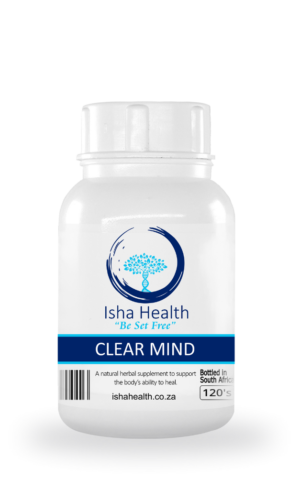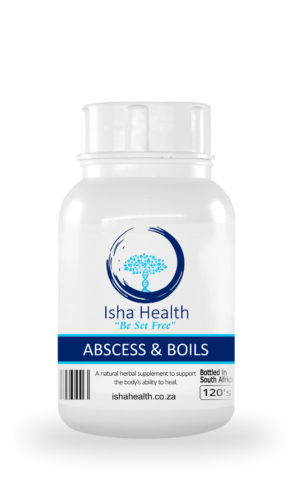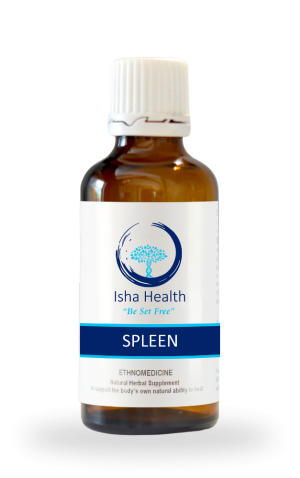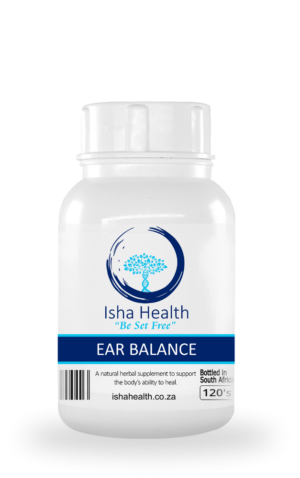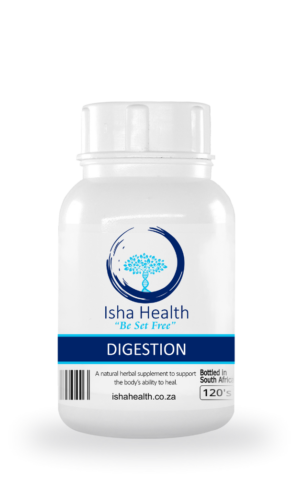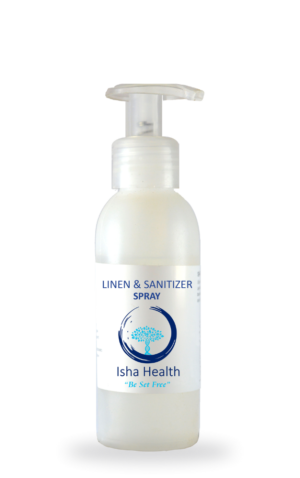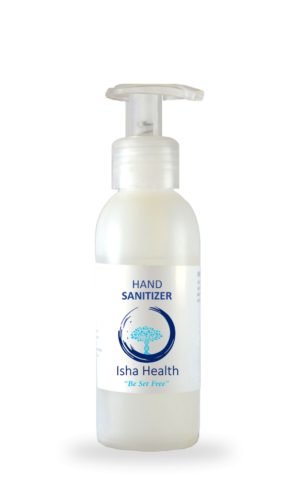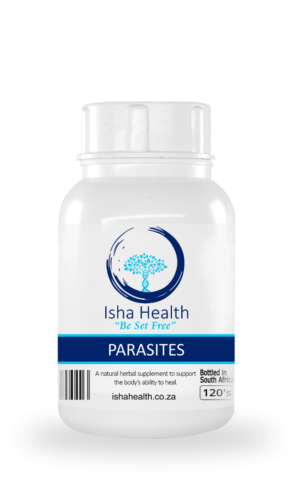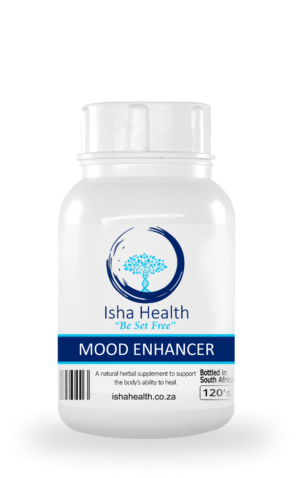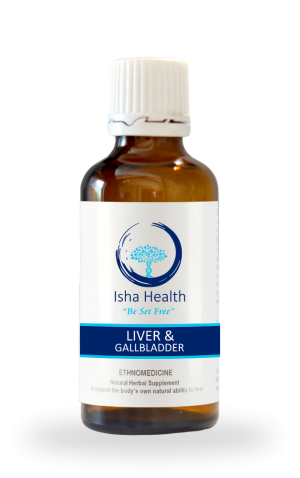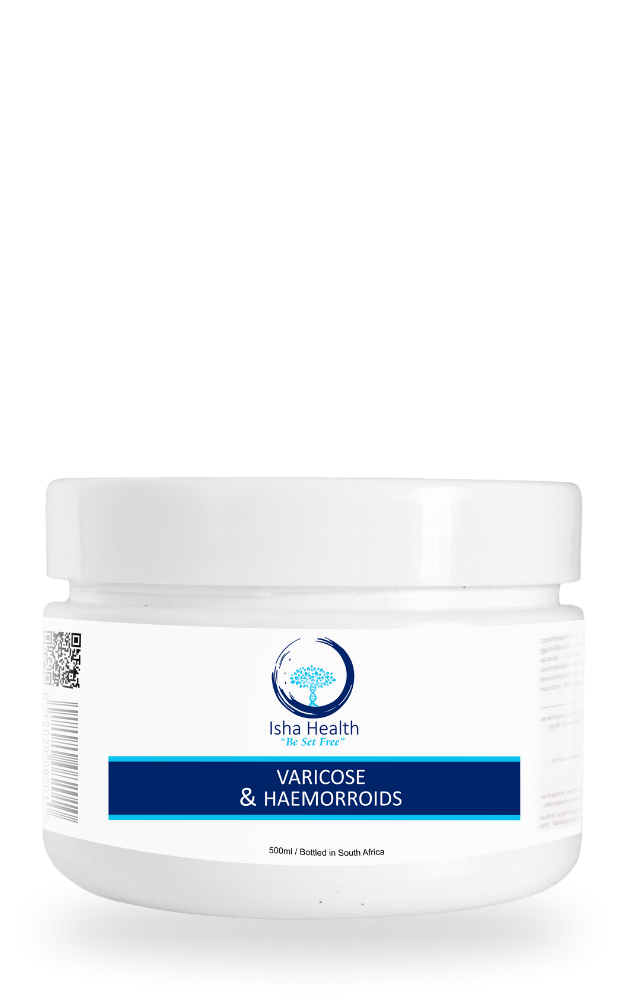
Description
Directions for Use
Ingredients
Warning
Technical Information
Our Herbal Varicose & Hemorrhoids Cream is formulated to enhance the body’s innate ability to address issues like varicose veins and haemorrhoids.
The cream supports the body by facilitating the constriction of vein walls, relieving itching and swelling, arresting bleeding, and contributing to the healing of varicose ulcers and haemorrhoids.
Apply externally to affected area 2-3x daily.
Apply generously to affected areas.
Wounds:
Use in conjunction with:
Bloodstream Cleanse Tincture to clean wounds before applying cream. Plus
Circulation & Heart capsule.
Aloe
Bearberry
Bilberry
Butchers Broom
Calendula
Comfrey
Feverfew
Ginkgo Billoba
Horse Chestnut
Lavender
Lemon Balm
Peppermint
Witch Hazel
Other African Herbs
Other Cream Ingredients:
*Oils:
Aloe, Baobab, Borage, Calendula, Castor, , Evening primrose, Flax, Grape Seed, Hazelnut, Hemp seed, Jojoba, Neem, Olive, Rosehip, Sweet almond, Vitamin E
*Essential Oils:
Benzoin, Black Pepper, Carrot, Cedarwood, Chamomile, Cinnamon, Clove, Coriander, Cypress, Dill, Eucalyptus, Frankincense, Geranium, Grapefruit, Juniper, Lavender, Lemon Balm, Lemon Grass, Marjoram, Neroli, Orange, Parsley, Patchouli, Peppermint, Pine, Rose, Sage … and more
DMSO, MSM, GLYCERINE
Herbs:
Aloe: Soothes haemorrhoids, reduces swelling and inflammation. Supports immune response. Promotes wound healing, coagulation, and acidity balance.
Bilberry: Contains anthocyanosides to heal bruises, haemorrhoids, and varicose veins. Strengthens capillary walls, addresses pain, and swelling. Internally: supports venous health, glaucoma, and eye problems.
Calendula: Tones veins, strengthens blood capillary walls. Effective for sores, wounds, ulcers, and varicose veins. Addresses bleeding, pain, and swelling.
Comfrey: Heals haemorrhoids, stops bleeding, and prevents putrefaction. Beneficial for varicose veins.
Horse Chestnut: Protects against vascular damage, strengthens veins, reduces capillary-wall permeability. Effective for haemorrhoids, varicose veins, and swollen tissue.
Lavender: Aids in healing, reduces inflammation, and relieves itching associated with varicose veins.
Lemon Balm: Beneficial for spider veins.
Witch Hazel: Eases throbbing, pain, itching, and swelling of haemorrhoids. Effective for venous disorders.
Oils:
Grape Seed: Contains specific antioxidants, promotes elasticity, and reduces fluid leakage in varicose veins.
Hazelnut: Beneficial for varicose conditions, circulation, and swelling.
Jojoba: Effective for varicose veins.
Neem: Supports haemorrhoids.
Essential Oils:
Benzoin: Effective for varicose veins, sores, varicose ulcers, circulation, and swelling.
Cedarwood: Tightens surrounding tissues and veins, strengthens damaged vein walls.
Chamomile: Relieves itching and swelling of haemorrhoids. Supports venous insufficiency and varicose ulcers.
Cypress: Effective for varicose, haemorrhoids, and prevention of varicose veins. Acts as an anti-bacterial and astringent.
Eucalyptus: Effective for varicose ulcers, varicose veins, venous insufficiency, circulation, and acts as an anti-inflammatory and decongestant of veins.
Geranium: Effective for varicose prevention, varicose veins, haemorrhoids, and varicose ulcers.
Grapefruit: Astringent, tightens surrounding tissues, damaged vein walls, and acts as a decongestant.
Peppermint: Strengthens damaged vein walls, tightens surrounding tissues and veins, effective for varicose ulcers, varicose prevention, varicose itch, inflammation, circulation, muscle pains, and haemorrhoids. Helps relieve pressure around the anus and supports venous insufficiency.
Sandalwood: Reduces excruciating pain, prevents infections, acts as an analgesic and antipyretic, and has cooling properties for haemorrhoids.
Tea Tree: Shrinks haemorrhoids, reduces swelling, itching, and inflammation. Promotes healing and effective for varicose ulcers and haemorrhoids. Kills bacteria.
Yarrow: Promotes blood circulation, disperses blood stagnation, heals haemorrhoids, strengthens capillary veins, stops bleeding, breaks up congealed blood, helps the body rid itself of excess fluid, and has anti-inflammatory properties
Not recommended for pregnant women as it is absorbed through the skin.
Protect from sunlight.
Store below 25°c.
Varicose Veins
Definition: Varicose veins are enlarged, twisted, and swollen veins that commonly occur in the legs and feet. These veins appear blue or dark purple and can be seen beneath the surface of the skin. They develop when the valves in the veins become weak or damaged, leading to improper blood flow.
Causes: Varicose veins result from weakened or damaged valves in the veins. Veins have one-way valves that ensure blood flows toward the heart. When these valves weaken or become damaged, blood can pool in the veins, causing them to enlarge and become varicose. The exact cause of this valve dysfunction is not always clear, but factors such as genetics, age, and hormonal changes may contribute.
Risk Factors: Several factors increase the risk of developing varicose veins, including
- Age: The risk tends to increase with age as vein valves may weaken over time.
- Family History: A family history of varicose veins can predispose an individual to the condition.
- Gender: Women are more prone to varicose veins, particularly during pregnancy or hormonal changes.
- Pregnancy: The increased pressure on pelvic veins during pregnancy can contribute to the development of varicose veins.
- Obesity: Excess weight can put additional pressure on the veins, affecting their proper functioning.
- Prolonged Standing or Sitting: Jobs or activities that involve long periods of standing or sitting may increase the risk.
Symptoms: Varicose veins may be asymptomatic for some individuals, while others may experience the following symptoms
- Aching or pain in the legs, which may worsen after prolonged standing or sitting.
- A feeling of heaviness or fatigue in the legs.
- Itching or burning sensations over the affected veins.
- Swelling, especially in the ankles and feet.
- Skin discoloration around the veins.
Complications: Complications of untreated varicose veins may include
- Venous Ulcers: Long-term venous insufficiency can lead to the development of open sores on the skin, known as venous ulcers.
- Blood Clots: In some cases, blood clots may form in the affected veins, causing inflammation (thrombophlebitis).
Treatment: Treatment options for varicose veins include:
- Lifestyle Changes: Regular exercise, elevating the legs, and avoiding prolonged periods of standing or sitting.
- Compression Stockings: These help improve blood flow and alleviate symptoms.
- Sclerotherapy: Injection of a solution into the affected veins to close them off.
- Laser or Radiofrequency Ablation: Using heat to seal off the affected veins.
- Surgical Procedures: In severe cases, procedures like vein stripping or ligation may be considered.
It’s important to consult with a healthcare professional for an accurate diagnosis and tailored treatment plan based on the severity of the condition.
Hemorrhoids
Definition: Hemorrhoids, also known as piles, are swollen and inflamed veins in the rectum and anus. They can occur internally, within the rectum, or externally, around the anus. Hemorrhoids are a common condition and can range from being mildly irritating to painful.
Causes: The exact cause of haemorrhoids is not always clear, but several factors can contribute to their development, including
- Straining during Bowel Movements: Putting excessive pressure on the rectal and anal area during bowel movements can lead to the development of haemorrhoids.
- Chronic Constipation or Diarrhea: Irregular bowel habits can contribute to the formation of haemorrhoids.
- Obesity: Excess weight can place increased pressure on the veins in the pelvic and rectal area.
- Pregnancy: Hormonal changes and increased pressure on pelvic veins during pregnancy can lead to the development of haemorrhoids.
- Aging: The tissues supporting the veins in the rectum and anus may weaken with age.
Types of Hemorrhoids
- Internal Hemorrhoids
- Located inside the rectum.
- Often painless unless they prolapse or protrude through the anal opening during a bowel movement.
- May cause bleeding during bowel movements.
- External Hemorrhoids
- Located under the skin around the anus.
- Can cause pain, itching, and discomfort, especially when sitting.
- May bleed if irritated.
Risk Factors: Several factors increase the risk of developing haemorrhoids, including:
- Age: The risk tends to increase with age.
- Family History: A family history of haemorrhoids may predispose an individual to the condition.
- Chronic Constipation or Diarrhea: Irregular bowel habits can contribute to haemorrhoid development.
- Pregnancy: Increased pressure on pelvic veins during pregnancy can lead to haemorrhoids.
- Straining During Bowel Movements: Habitual straining can contribute to the development of haemorrhoids.
Symptoms: The symptoms of haemorrhoids can vary depending on the type and severity, but common signs include:
- Rectal bleeding during bowel movements.
- Itching or irritation in the anal region.
- Pain or discomfort, especially during and after bowel movements.
- Swelling around the anus.
- A lump near the anus, which may be sensitive or painful.
Treatment: Treatment options for haemorrhoids may include:
- Lifestyle Modifications: Dietary changes to increase fiber intake, maintaining regular bowel habits, and staying well-hydrated.
- Topical Treatments: Over-the-counter creams or ointments to relieve symptoms.
- Warm Baths: Soaking in warm water (sitz baths) to alleviate discomfort.
- Medical Procedures: In more severe cases, procedures such as rubber band ligation, sclerotherapy, or surgical removal may be recommended.
It’s important to seek medical advice for a proper diagnosis and appropriate treatment based on the specific characteristics and severity of the haemorrhoids.
How varicose veins and haemorrhoids are formed and if there is an interconnection between the two
Varicose veins and haemorrhoids are both vascular conditions related to veins, but they occur in different parts of the body, and their formation is influenced by distinct factors. While there is no direct anatomical connection between varicose veins and haemorrhoids, they share some common risk factors and underlying mechanisms related to venous insufficiency.
Formation of Varicose Veins:
- Vein Structure: Veins have one-way valves that facilitate the flow of blood back to the heart. These valves prevent the backward flow of blood.
- Weakening of Valves: Varicose veins form when the valves in the veins become weakened or damaged. This allows blood to pool and flow backward, causing the veins to enlarge, twist, and become varicose.
- Increased Pressure: Factors such as age, genetics, hormonal changes, pregnancy, obesity, and prolonged periods of standing or sitting can contribute to increased pressure on the veins, leading to valve dysfunction.
Formation of Hemorrhoids:
- Anal and Rectal Veins: Hemorrhoids are swollen and inflamed veins located in the rectum and anus.
- Increased Pressure: Hemorrhoids form when there is increased pressure on the veins in the pelvic and rectal area. This pressure can result from factors such as straining during bowel movements, chronic constipation or diarrhea, obesity, pregnancy, and aging.
- Swelling and Inflammation: The increased pressure can lead to the swelling and inflammation of the veins, causing the development of haemorrhoids.
Interconnection Between Varicose Veins and Hemorrhoids: While there is no direct anatomical connection between varicose veins and hemorrhoids, they share common risk factors, such as:
- Increased Venous Pressure: Both conditions are influenced by an increase in pressure on the veins. This pressure can be due to factors like obesity, prolonged periods of standing or sitting, and pregnancy.
- Genetic Predisposition: There is a genetic component to the development of both varicose veins and hemorrhoids. Individuals with a family history of these conditions may be more prone to experiencing them.
It’s important to note that even though these conditions share some risk factors, they occur in different anatomical locations and involve different veins. Varicose veins typically affect the lower extremities, while haemorrhoids occur in the anal and rectal region.
If you are experiencing symptoms related to varicose veins or haemorrhoids, it is advisable to consult with a healthcare professional for an accurate diagnosis and appropriate management.
Factors that influence the formation of varicose veins
The formation of varicose veins is influenced by a multitude of interconnected factors, spanning various physiological processes. Here’s a comprehensive explanation that includes connective tissue, collagen, acidity, hormones, enzymes, vitamin deficiencies, mineral deficiencies, amino acid deficiencies, cytokines, inflammation, blood, veins, and additional factors
- Connective Tissue and Collagen: Collagen and elastin fibers in the connective tissue provide tensile strength and elasticity to vein walls. Weakened collagen and elastin, often due to genetic factors, aging, or enzymatic degradation (particularly collagenases and elastases), contribute to vein wall laxity.
- Acidity (Acidosis): Acidosis in the vascular tissue can result from chronic inflammation. An acidic microenvironment influences enzyme activity, potentially affecting extracellular matrix remodeling and smooth muscle cell function.
- Hormonal Changes: Estrogen and progesterone influence the tone and flexibility of blood vessels. Pregnancy-related hormonal changes, oral contraceptives, or hormonal therapies can impact vein structure.
- Enzymatic Activity: Matrix metalloproteinases (MMPs) are enzymes responsible for breaking down extracellular matrix components. Elevated MMP activity, often associated with chronic inflammation, contributes to the degradation of collagen (particularly collagen types I and III) and elastin in vein walls.
- Vitamin Deficiencies:
- Vitamin K2 (Menaquinone): Essential for proper blood clotting and calcium regulation. Deficiency may affect vein wall integrity.
- Vitamin D3 (Cholecalciferol): Supports immune function and calcium absorption. Deficiency can impact vascular health.
- Mineral Deficiencies: Potassium: Essential for maintaining vascular tone. Deficiency may contribute to venous dilation. Magnesium: Required for proper muscle and nerve function, including vascular smooth muscle. Deficiency can influence blood vessel tone.
- Amino Acid Deficiencies: Amino acids are building blocks for collagen synthesis. Deficiencies in specific amino acids, such as proline, lysine, and glycine, may impair the production of structural proteins in vein walls.
- Cytokines and Inflammatory Mediators:
- Interleukins (IL): Regulate immune responses and inflammation.
- TNF-α (Tumour Necrosis Factor-alpha): Promotes inflammation and may contribute to vein wall damage.
- TGF-β (Transforming Growth Factor-beta): Involved in tissue repair and fibrosis, contributing to extracellular matrix changes in veins.
- Inflammation: Chronic inflammation results from factors such as increased venous pressure or valve dysfunction. Inflammatory mediators recruit immune cells, initiating tissue remodeling and structural changes in vein walls.
- Blood and Veins: Increased venous pressure, often due to standing or sitting for extended periods, can stress vein walls. Valve dysfunction leads to inefficient blood flow, contributing to venous dilation and pooling.
- Genetic Predisposition: Family history indicates a genetic component. Genetic factors may influence the structure and function of vein walls, increasing susceptibility.
- Lifestyle Factors:
- Obesity: Excess weight places increased pressure on veins.
- Sedentary Lifestyle: Lack of physical activity can impair blood circulation.
- Prolonged Standing or Sitting: Contributes to venous pressure and valve dysfunction.
- Age: Aging leads to natural wear and tear of vein walls. Reduced elasticity and weakened valves contribute to the development of varicose veins.
- Pregnancy: Increased blood volume and hormonal changes during pregnancy can strain veins. Pressure on pelvic veins and hormonal fluctuations contribute to the development of varicose veins.
Understanding the specific roles of amino acids and minerals in maintaining vascular health provides insight into the complexities of varicose vein formation.
Ingredients which are traditionally used for this disorder
Technical info:
Herbs:
Aloe: Aloe vera, rich in acemannan and polysaccharides, exhibits anti-inflammatory and wound-healing properties. Its impact on coagulation aids in stopping bleeding, while acidity regulation alleviates symptoms related to varicose veins. Aloe also supports immune responses crucial for overall wound healing.
Bearberry: With its high tannin content, bearberry promotes the construction of vein walls, maintaining vascular integrity. This action is essential for addressing haemorrhoids and preventing varicose veins.
Bilberry: Anthocyanosides in bilberry offer antioxidant effects, aiding in the healing of bruises and haemorrhoids. Strengthening capillary walls, bilberry addresses pain and swelling associated with varicose veins. Internally, it supports venous insufficiency, glaucoma, and reinforces the blood-brain barrier.
Butchers Broom: Ruscogenins in butchers broom strengthen blood vessel walls, providing relief for haemorrhoids and supporting overall blood vessel health. This addresses symptoms related to varicose veins.
Calendula: A flavonoid-rich herb, calendula acts on sores, wounds, and ulcers. It tonifies veins, strengthens blood capillary walls, and addresses pain and swelling of varicose veins. Calendula’s anti-inflammatory properties make it effective in various skin conditions, including ringworm.
Comfrey: Allantoin in comfrey aids in haemorrhoids and stops bleeding. Comfrey also addresses varicose veins, preventing putrefaction and pus formation.
Devil’s Claw: With anti-inflammatory properties, devil’s claw is effective in addressing ulcers, wounds, and pain. This herb contributes to overall relief in varicose conditions.
Echinacea: Echinacea acts as a pain reliever and disinfectant, beneficial for conditions like boils, septicaemia, and cracked lips. Its immune-stimulating properties contribute to overall wound healing and relief from haemorrhoids.
Feverfew: The vasodilation of peripheral vessels by feverfew helps in addressing varicosities. It also plays a role in lowering blood pressure, benefiting skin conditions like acne.
Geranium Rose: With properties targeting varicose and haemorrhoids, geranium rose offers relief through its astringent and anti-inflammatory effects. Its application aids in strengthening blood vessels.
Ginkgo Biloba: Ginkgo biloba’s flavonoids address haemorrhoids and varicose conditions. Its impact on circulation and the prevention of leakage from small veins contributes to its effectiveness.
Horse Chestnut: Aescin, a compound in horse chestnut, protects against vascular damage and strengthens veins. It reduces capillary-wall permeability, making it valuable for haemorrhoids and varicose veins. Its anti-inflammatory and astringent properties alleviate swelling and pain.
Lavender: Lavender aids in healing, reduces inflammation, and addresses itching associated with varicose veins. Its application can provide relief in the context of haemorrhoids.
Lemon Balm: Effective against spider veins, lemon balm’s properties contribute to improved venous health. It provides relief from symptoms associated with varicose conditions.
Lemon Grass: Lemon grass addresses haemorrhoids, varicose conditions, and various skin issues. Compounds like citral and limonene contribute to its anti-inflammatory properties, preventing blood pooling in veins.
Marshmallow Root: Rich in mucilage, marshmallow root addresses bleeding, ulcers, and inflammation. It provides relief for haemorrhoids, boils, and skin cancer.
Stinging Nettle: Stinging nettle’s anti-septic and astringent properties make it effective against bleeding and varicose conditions.
Walnut Leaves & Shells: With antimicrobial properties, walnut leaves and shells target festering eczema, bone swelling, and sweaty hands/feet. These properties contribute to its effectiveness in the context of varicose conditions.
Witch Hazel: Witch hazel’s vasoconstrictive and anti-inflammatory effects ease throbbing, pain, itching, and swelling of haemorrhoids. It shrinks enlarged tissues and provides relief in venous disorders.
Yarrow: Yarrow promotes blood circulation, stops bleeding, and strengthens capillary veins. Active ingredients like achilleine and flavonoids contribute to its effectiveness against haemorrhoids.
Oils:
Aloe: Aloe vera’s anti-inflammatory properties soothe haemorrhoids and reduce swelling. Its immune-supportive effects aid in overall wound healing.
Baobab: Rich in omega fatty acids, baobab oil nourishes and supports repair processes, contributing to skin health.
Borage Oil: Addressing circulation and swelling, borage oil’s anti-inflammatory properties make it beneficial for varicose conditions.
Calendula: Calendula oil, rich in flavonoids, addresses sores, wounds, and ulcers. Its toning effect on veins and strengthening of blood capillary walls make it effective against varicose veins.
Evening Primrose: With a focus on circulation and swelling, evening primrose oil’s properties make it valuable in the context of varicose conditions.
Flax Seed: Supporting circulation and reducing swelling, flax seed oil’s anti-inflammatory effects contribute to its effectiveness.
Grape Seed: Specific antioxidants in grape seed oil promote elasticity and reduce fluid leakage, addressing varicose veins.
Hazelnut: Addressing varicose conditions and supporting circulation, hazelnut oil provides relief through its anti-inflammatory properties.
Hemp Seed: Nourishing and supporting overall skin health, hemp seed oil contributes to the well-being of the skin.
Jojoba: Jojoba oil addresses varicose veins and supports skin health.
Neem: Neem oil targets haemorrhoids, providing relief through its properties.
Olive: Olive oil addresses varicose conditions, contributing to skin health.
Rosehip: Rosehip oil targets varicose veins, regenerating and providing anti-aging effects effective for scars.
Sweet Almond: Supporting circulation and reducing swelling in varicose veins and haemorrhoids, sweet almond oil’s properties make it beneficial for skin health.
Vitamin E: Vitamin E oil soothes and shrinks haemorrhoids, providing antioxidant effects.
Essential Oils:
Benzoin: Addressing varicose veins, sores, and ulcers, benzoin essential oil’s circulatory and anti-inflammatory effects make it valuable.
Bergamot: Bergamot essential oil targets varicose veins and inflammation, supporting overall circulation.
Black Pepper: Effective against varicose veins, black pepper essential oil improves circulation.
Borage: With anti-inflammatory properties, borage essential oil treats skin disorders and promotes healthy skin.
Cedarwood: Cedarwood essential oil tightens tissues and veins, strengthening damaged vein walls.
Cinnamon: Stimulating healthy tissue growth and relieving inflammation, cinnamon essential oil provides relief in varicose conditions.
Clary Sage: Acting as a decongestant of veins, clary sage essential oil contributes to improved venous health.
Clove: Providing pain relief, addressing acne, ulcers, and acting as a potent antiseptic, clove essential oil is effective in haemorrhoids.
Carrot Seed: Addressing varicose conditions and supporting circulation, carrot seed essential oil is beneficial for skin health.
Chamomile: Relieving itching and swelling of haemorrhoids, chamomile essential oil’s analgesic and anaesthetic properties contribute to overall healing.
Clove: With antimicrobial properties, clove essential oil treats skin conditions and offers antioxidant effects.
Coriander: Supporting circulation, coriander essential oil is effective in addressing varicose conditions.
Cypress: Preventing varicose veins, killing bacteria, and improving blood flow, cypress essential oil is beneficial for haemorrhoids.
Dill: With anti-inflammatory properties, dill essential oil is a strong ingredient in fighting haemorrhoids.
Eucalyptus: Addressing varicose ulcers, venous insufficiency, and acting as an anti-inflammatory and decongestant, eucalyptus essential oil contributes to improved venous health.
Fennel: Targeting haemorrhoids and varicose veins with anti-inflammatory properties, fennel essential oil is effective in supporting skin health.
Frankincense: Addressing pain and inflammation of haemorrhoids, frankincense essential oil inhibits bacteria and supports overall healing.
Galbanum: With anti-inflammatory properties, galbanum essential oil supports wound healing.
Geranium: Preventing varicose conditions, addressing haemorrhoids, and promoting healing, geranium essential oil is effective in improving venous health.
Ginger: Targeting haemorrhoids and varicose conditions, acting as a decongestant of veins, ginger essential oil contributes to improved circulation.
Grapefruit: With astringent properties, grapefruit essential oil tightens surrounding tissue and damaged vein walls, effective in varicose conditions.
Helichrysum: Promoting healthy circulation, helping inflamed veins, and addressing varicose conditions, helichrysum essential oil is anticoagulant, anaesthetic, and regenerative.
Hyssop: Effective in varicose veins, hyssop essential oil contributes to improved venous health.
Juniper: Decreasing inflammation, juniper essential oil is beneficial for haemorrhoids.
Lavender: Acting as a decongestant, addressing venous insufficiency, and providing analgesic properties, lavender essential oil is effective against varicose ulcers and pain associated with haemorrhoids.
Lemon Balm: Effective against spider veins and varicose veins, lemon balm essential oil provides relief through its flavonoids.
Lemon Grass: Addressing haemorrhoids, varicose conditions, and various skin issues, lemon grass essential oil’s compounds like citral and limonene contribute to its anti-inflammatory properties.
Lemon: With preventive properties against varicose conditions, lemon essential oil acts as a decongestant of veins.
Marjoram: Addressing cramps, marjoram essential oil is beneficial in relieving pain associated with haemorrhoids.
Myrrh: Supporting haemorrhoids application and circulation, myrrh essential oil is effective in overall skin health.
Neroli: Addressing varicose veins, venous insufficiency, and circulation and swelling, neroli essential oil is effective against haemorrhoids.
Orange: Supporting circulation and acting as an astringent, orange essential oil tightens surrounding tissue and vein walls, effective in varicose conditions.
Parsley: Effective against varicose veins, parsley essential oil contributes to improved venous health.
Patchouli: Supporting haemorrhoids application, pain relief, and addressing inflammation, patchouli essential oil’s adaptogenic and sedative properties make it effective.
Pine Bark: Effective against varicose veins, pine bark essential oil contributes to improved venous health.
Peppermint: Strengthening damaged vein walls, tightening surrounding tissues and veins, and addressing varicose ulcers and prevention, peppermint essential oil is effective in reducing inflammation, circulation, muscle pains, and haemorrhoids.
Rose: Addressing inflammation of surrounding tissue of affected veins, rose essential oil is effective against varicose conditions.
Rosemary: Drawing blood to the skin’s surface, rosemary essential oil is effective in supporting circulation.
Sandalwood: Reducing excruciating pain, preventing infections, and providing analgesic and antipyretic properties, sandalwood essential oil has cooling effects for haemorrhoids.
Sage: Addressing pain, swelling, and bleeding, sage essential oil is effective in relieving symptoms associated with haemorrhoids.
Thyme: Effective against varicose ulcers and inflammation of surrounding tissue of veins, thyme essential oil contributes to improved venous health.

